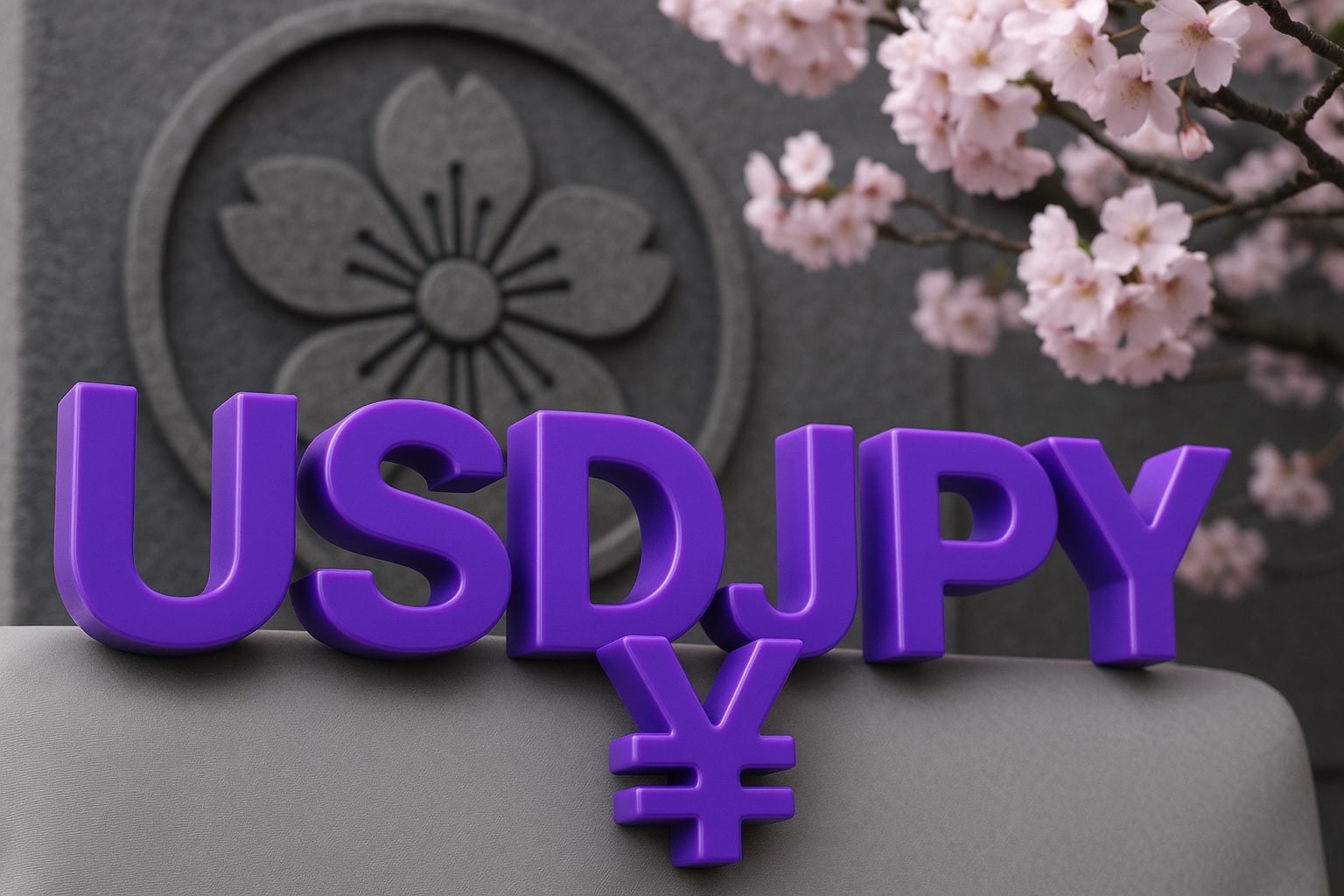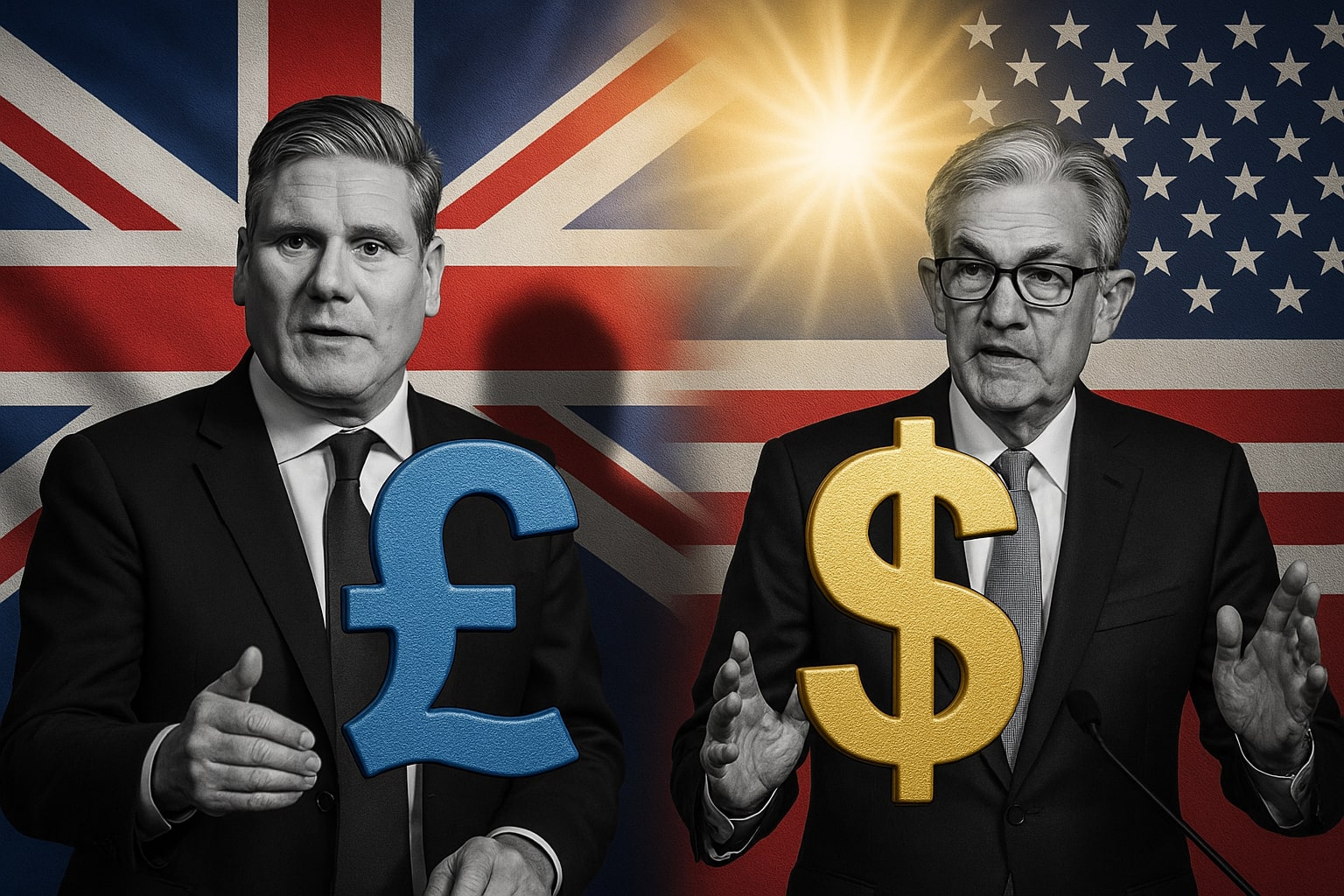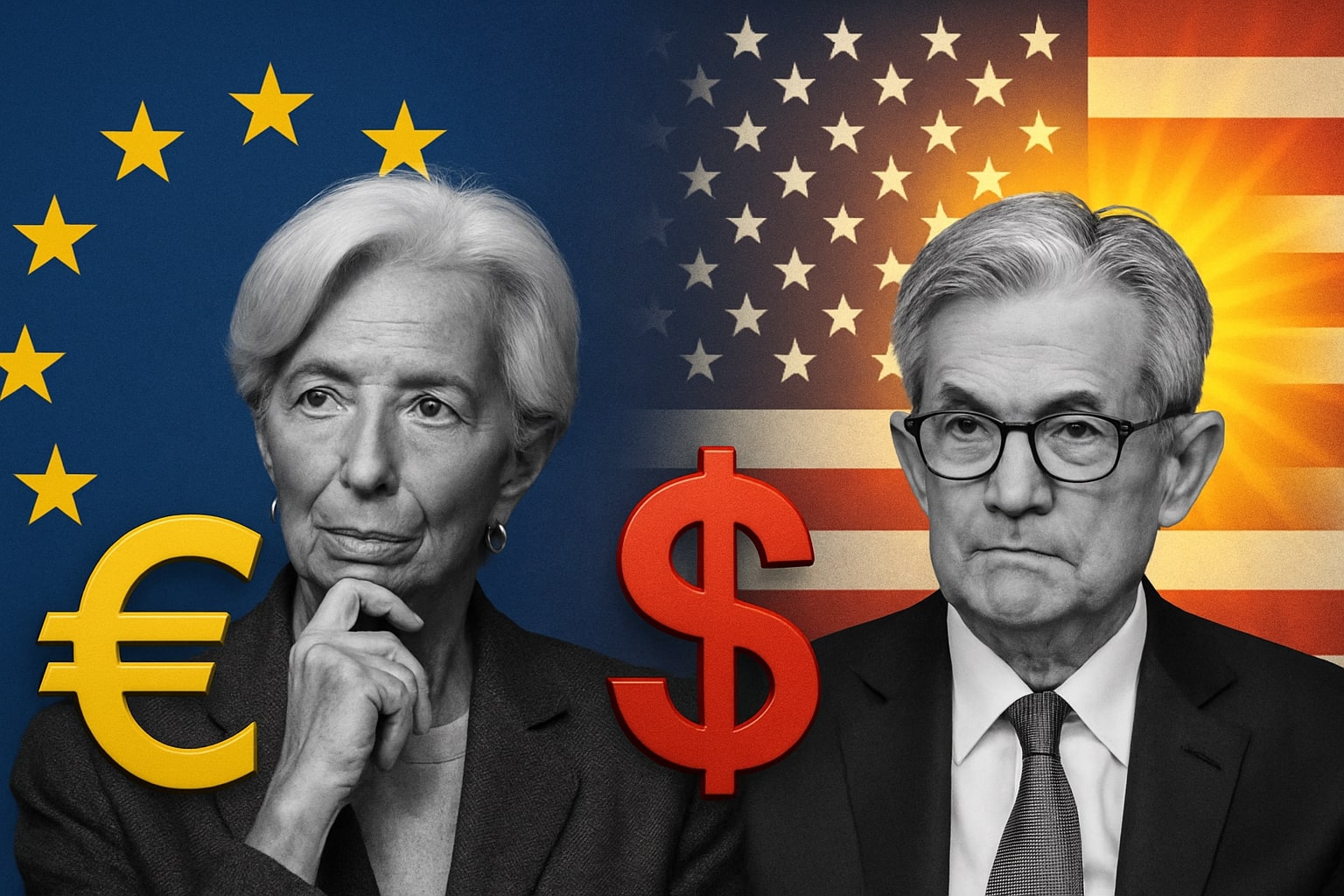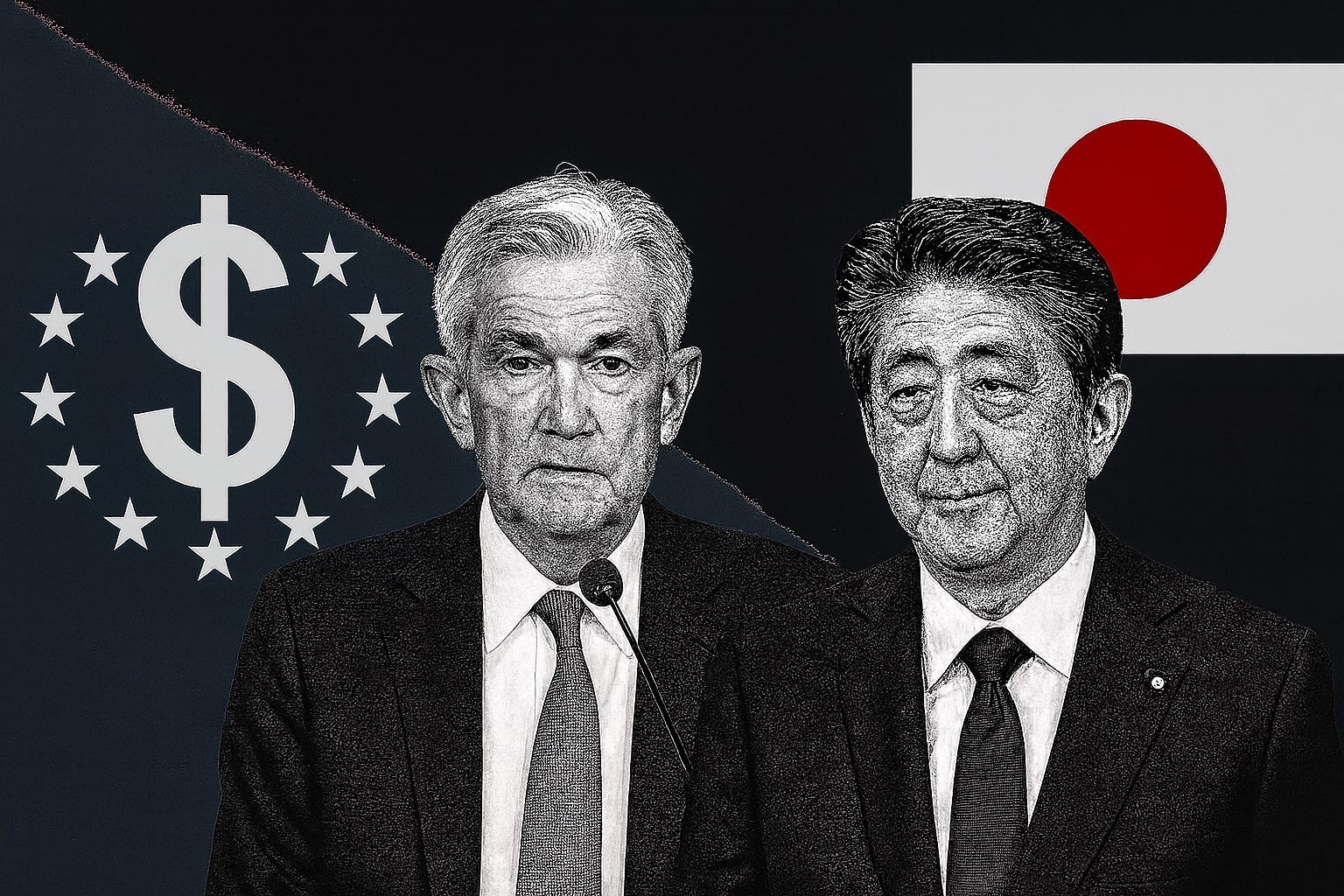
USD/JPY Price Forecast: Dollar-Yen Stalls Near 148 as Political Turmoil Clouds Fed
Inflation at 3.1% in the U.S., Tokyo CPI set at 2.5%, and BoJ wage growth hint at tightening while Fed politics weaken confidence in the dollar | That's TradingNEWS
USD/JPY edges higher as political turmoil clouds Fed outlook
The USD/JPY pair trades near 147.90, gaining 0.4% as the Japanese yen underperforms broadly. The rebound follows yesterday’s decline, but the sustainability of this move is questionable amid rising political risk in the U.S. President Trump’s unprecedented decision to dismiss Fed Governor Lisa Cook has been interpreted by markets as an attempt to exert political control over the central bank. The lawsuit Cook filed to retain her position has intensified concerns over the independence of the Federal Reserve, a cornerstone of investor confidence. For the dollar, this intervention risk weighs heavily, even as short-term momentum offers support against the yen.
Fed policy expectations clash with persistent inflation data
Markets are pricing an 84.9% probability of a rate cut in September and an 83.5% chance of another 25 bps cut by year-end. Yet inflation data tells a different story. Core CPI has risen to 3.1%, headline CPI stands at 2.7%, and Core PCE is at 2.8%. All are comfortably above the Fed’s 2% target. The lowest CPI print in recent years was 2.3%, highlighting that inflation has never been subdued enough to justify aggressive cuts. Despite this, Powell has shifted his language to emphasize employment, with the unemployment rate holding at 4.2%, near full employment. For USD/JPY, the disconnect between market expectations for cuts and inflation realities could generate volatile swings as traders reassess whether the Fed can truly justify easing.
Japanese CPI and BoJ stance add pressure on yen
The upcoming Tokyo CPI release is expected to show annual inflation slowing to 2.5% from 2.9%. While this cooling supports a cautious BoJ stance, Japan’s broader core-core inflation remains above 3%, higher than the U.S. for the first time in nearly five decades. Governor Ueda has highlighted wage growth spreading from large corporates to SMEs, with minimum wages poised for record increases. These trends keep the door open for a potential October rate hike, even if September remains unlikely. The BoJ’s stance of balancing inflation above target with wage growth momentum means yen weakness may not be as entrenched as current price action suggests. Should inflation hold above 2% with accelerating wages, yen strength could resurface quickly.
Technical setup keeps USD/JPY pinned in tight ranges
On the technical side, USD/JPY is consolidating between 146.40 support and 148.40 resistance, with the 200-day EMA sitting at 147.90. The RSI remains neutral around 50, while the MACD histogram hovers near zero, reflecting indecision. An Ascending Triangle formation suggests tightening price action, with a breakout above 148.78 opening the way to psychological resistance at 150.00 and then the March high at 151.20. On the downside, a drop below 145.85 would expose the July lows at 144.22 and 143.45. The neutral technical picture reflects markets awaiting clarity from upcoming inflation data and Powell’s next communication.
Rate differentials dictate carry trade outlook for USD/JPY
The yield gap remains the core driver for USD/JPY. U.S. 10-year yields spiked from 3.6% to above 4.8% after last year’s rate cuts, proving that monetary easing does not always weaken the dollar when inflation is above target. Today, the U.S. curve remains elevated, with long-term rates holding near 4.6% even as markets anticipate cuts. Japan, meanwhile, still operates with a 0.5% reference rate, though markets see scope for hikes later in the year. Any narrowing of this differential could unwind carry trades that supported the dollar-yen rally through 2023–2024. A sharp unwind would have broader consequences across equities and emerging markets, making USD/JPY a key barometer for global risk appetite.
Political dynamics increase safe-haven demand for yen
Japanese political stability contrasts sharply with U.S. turmoil. Prime Minister Shigeru Ishiba has seen rising popularity despite his party losing parliamentary majority, providing investors with a sense of continuity. Meanwhile, U.S. politics are fueling distrust in the dollar. Trump’s push for a weaker currency, his open pressure on Powell, and his interference in Fed appointments are undermining the perception of dollar assets as safe. This shift may drive international capital into yen positions, especially if geopolitical risks or trade tensions escalate further. The return of Japan’s chief negotiator, Akazawa, to Washington for investment talks adds another layer of uncertainty—progress could support yen stability, while fresh tariff threats could trigger volatility.
Short-term forecast for USD/JPY
The USD/JPY pair is caught in a fragile balance. Technical resistance at 148.50 has capped rallies, while support near 146.40 holds declines. The more probable near-term outcome is continued range trading with a bearish tilt if U.S. political turmoil deepens and Fed cuts move closer despite stubborn inflation. Should Powell sound dovish at the September 17 meeting, the pair risks sliding toward 145.00. Conversely, any hawkish resistance from Powell or surprise BoJ caution could keep USD/JPY anchored near 150.00. For now, the market remains neutral-to-bearish, with the yen benefiting from safe-haven demand while the dollar grapples with inflation risk and political instability.
That's TradingNEWS
Read More
-
Baidu Stock Price Forecast - Bidu at $120 AI, Chips and Robotaxis Clash With China Macro Fears
15.12.2025 · TradingNEWS ArchiveStocks
-
XRP Price Forecast - XRP-USD Holds $1.90 Support as Bulls Target a Break Toward $2.60–$2.70
15.12.2025 · TradingNEWS ArchiveCrypto
-
Oil Price Forecast - Oil Slip Toward $60 as Oversupply Grows and Tanker Rates Explode
15.12.2025 · TradingNEWS ArchiveCommodities
-
Stock Market Today - Dow, S&P 500 and Nasdaq Futures Climb as Gold and Tsla Stock Jumps and Wall Street Awaits Jobs Data
15.12.2025 · TradingNEWS ArchiveMarkets
-
GBP/USD Price Forecast - Pound Holds 1.34 Ahead of BoE 3.75% Cut and Key US Jobs Data
15.12.2025 · TradingNEWS ArchiveForex


















